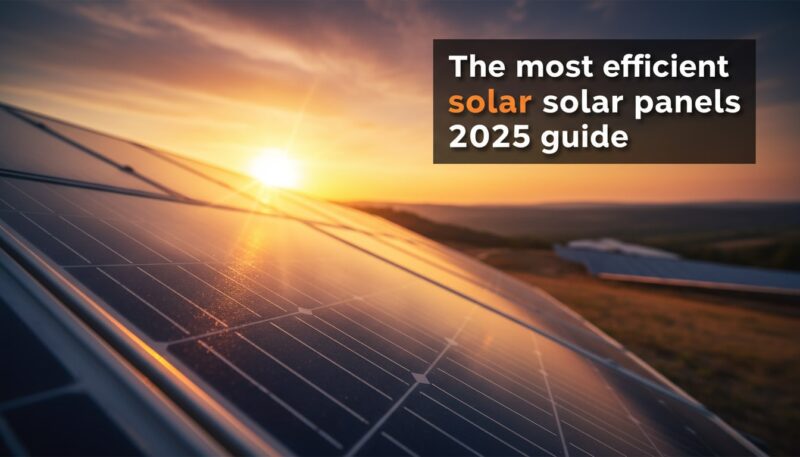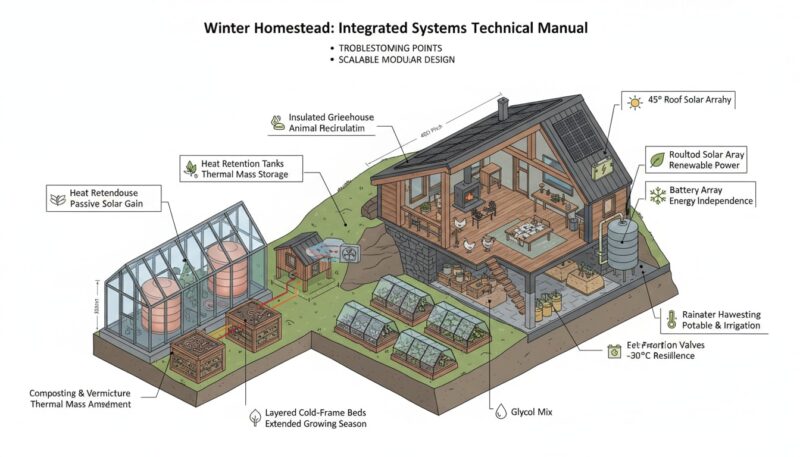
Affordable solar system kits offer homeowners a simple way to use renewable energy. These kits contain everything needed for effective energy management.
Options include compact 200W setups to larger multi-panel systems.
These solutions help reduce energy bills while promoting eco-friendly energy use.
Many kits also offer net metering and energy independence, making them ideal for modern living.
Key benefits of using affordable solar kits include:
- Pre-bundled kits designed for quick setup and seamless installation.
- Suitable for off-grid and backup power requirements.
- Available in various sizes for small homes, sheds, and RVs.
- Cost savings compared to traditional energy sources.
- Eligibility for federal tax credits and local solar incentives.
Click here to learn more about: how to make homemade soap at home
Understanding Solar Panels For Home Use
Solar panels play a key role in home energy systems. Different types of solar panels, such as monocrystalline and polycrystalline, provide unique benefits. Energy efficiency ratings are important since higher ratings lead to more energy savings on electricity bills. Selecting the right panels can significantly impact your overall energy costs. Consider the following when choosing panels for your solar energy systems:
Choosing the Right Solar Panels
- Assess energy needs to match panel capacity.
- Evaluate installation space and ease of setup.
- Review warranties and manufacturer support.
- Compare efficiency ratings to maximize savings.
By considering these factors, you can ensure your solar panels meet your needs and budgets effectively. A well-chosen solar panel system enhances energy efficiency and contributes to long-term cost savings.

How Inverters Enhance Solar Efficiency
Inverters are essential for optimizing the performance of solar energy systems. Choosing the right inverter can significantly boost energy capture and overall efficiency.
Inverter technology converts the direct current generated by solar panels into alternating current, making it usable for homes.
For maximum energy efficiency, consider different types of inverters—string, micro, or power optimizers—based on your system’s needs.
Maintenance and Monitoring
Regular maintenance, such as cleaning and connection checks, ensures that your inverter operates smoothly.
Monitoring tools can track performance and enhance longevity in energy savings. Keeping an eye on your inverter’s efficiency helps maintain your solar power system’s performance.
Building A Battery Bank For Energy Storage
Battery banks are key to achieving energy independence for solar energy users.
Sizing a battery bank correctly is important for efficiently meeting energy needs. Consider factors like daily energy consumption and solar production when calculating capacity.
Types of Batteries
Different battery types—like Lead-Acid, Lithium-Ion, and Flow batteries—offer varying longevity and maintenance requirements.
Investing in the right battery can lead to significant savings on energy bills while supporting eco-friendly energy practices.
Planning Your Battery Bank
A well-planned battery bank setup ensures reliable backup power during outages and maximizes your solar power potential.
Be sure to evaluate your options for battery storage solutions when considering grid independence.
Affordable Solar System Kits
Affordable solar system kits offer a straightforward and cost-effective way for homeowners, small business owners, and DIY enthusiasts to harness solar energy for their power needs.
These all-in-one packages typically include solar panels, inverters, mounting equipment, batteries, and wiring.
Benefits of Solar Kits
- Pre-bundled kits designed for quick setup and seamless installation
- Suitable for off-grid and backup power requirements
- Available in various sizes for sheds, small homes, cabins, and RVs
- Options range from compact 200W to larger multi-panel systems
- Reduce dependency on the traditional grid and lower long-term energy costs
- DIY-friendly with step-by-step guides and technical support
- Allows cost savings compared to professional installations
- Qualifies for federal tax credits and local solar incentives
Cost and Incentives
The average cost for a typical 6kW kit ranges from $7,000 to $18,000 before incentives. Many kits are eligible for solar tax credits and financial incentives, making them an attractive option for sustainable living.
Final Thoughts
Solar system kits contribute significantly to renewable energy adoption and environmental sustainability. They are scalable and customizable to fit different usage requirements and budgets.
| Inverter Type | Efficiency Benefits |
|---|---|
| String Inverters | Cost-effective for larger systems |
| Micro Inverters | Maximize energy capture from individual panels |
| Power Optimizers | Enhance performance in shaded conditions |
Exploring Offgrid Living With Solar Kits
Offgrid living allows individuals to rely on renewable energy sources like solar power. Solar kits provide a simple method for homeowners to harness this energy for their homes, cabins, or RVs.
These affordable systems are designed for quick installation, offering scalability and versatility.
Key components of a solar kit include solar panels, inverters, battery storage, and mounting equipment.
Battery banks store energy for use during cloudy days or at night.
When integrating solar into your offgrid lifestyle, evaluate your power needs precisely. Planning your installation using installation guides makes the process smoother.
Always monitor your solar output to optimize energy use.
The Role Of Photovoltaic Technology In Savings
Photovoltaic technology significantly impacts energy savings and costs by converting sunlight into electricity efficiently. Advancements in solar technology lead to better efficiency rates and longer-lasting systems, promoting energy independence.
Efficiency and Longevity
Modern solar panels use advanced materials to enhance energy conversion.
This allows homeowners to generate more electricity from the same sunlight exposure.
Higher efficiency translates into reduced energy bills.
Future Innovations
Innovations, such as solar shingles, are emerging.
These technologies aim to optimize systems for energy savings and contribute to a sustainable future. The growing market for solar energy systems suggests ongoing improvements and long-term savings.
- Solar system kits are affordable and user-friendly.
- Available sizes suit homes, sheds, cabins, and RVs.
- Scalable options reduce dependency on the grid.
- Eligible for federal tax credits and local incentives.
- Average cost for a typical solar kit ranges from $7,000 to $18,
Solar Kits and Offgrid Living
- Solar kits can significantly reduce reliance on traditional energy sources.
- Battery storage systems ensure energy availability during non-sunny periods.
- Modern solar technology improves efficiency, leading to lower electricity costs.
- Homeowners can benefit from tax credits and incentives for solar installations.
What Is A Charge Controller And Why It Matters
A charge controller plays a key role in managing battery banks in solar energy systems. It protects batteries from overcharging and deep discharging, which promotes longevity.
Charge controllers regulate voltage and current from solar panels, ensuring batteries receive optimal power levels.
This regulation prevents damage and enhances the efficiency of the battery bank.
Fact: Charge controllers can increase battery life by up to 30% when installed correctly.
When selecting a charge controller, ensure it matches the solar panel output and the battery type for best results. Proper installation is essential for safety and efficiency, so follow provided guidelines closely.
Benefits Of Renewable Energy For Homeowners
Transitioning to renewable energy brings clear advantages for homeowners.
They can achieve substantial energy savings by using solar power. Investing in solar technology reduces reliance on traditional power sources, leading to long-term financial benefits.
Statistic: Homeowners can save an average of $1,500 per year by switching to solar energy.
Several financial incentives, such as federal and local tax credits, make the transition to renewable resources more appealing.
To start, homeowners should:
- Evaluate their energy consumption.
- Explore affordable solar system kits tailored to their needs.
- Consider DIY installation to reduce costs.
These kits simplify the installation process and can transform energy management for residential properties.
Affordable Solar System Kits
Affordable solar system kits offer a straightforward and cost-effective way for homeowners, small business owners, and DIY enthusiasts to harness solar energy. These all-in-one packages typically include solar panels, inverters, mounting equipment, batteries, and wiring, tailored for easy installation.
- Pre-bundled kits designed for quick setup.
- Suitable for off-grid and backup power needs.
- Available in sizes for homes, sheds, and RVs.
- Options from compact 200W to larger multi-panel systems.
- Reduces dependency on the grid and lowers energy costs.
- DIY-friendly with guides and technical support.
These kits may lack professional maintenance in some DIY options but qualify for federal tax credits and local incentives. The average cost of a typical 6kW kit ranges from $7,000 to $18,000 before incentives.
Charge Controllers and Renewable Energy
- Charge controllers can increase battery life by up to 30% when installed correctly.
- Homeowners can save an average of $1,500 per year by switching to solar energy.
- Affordable solar system kits simplify the installation process for residential properties.
- Typical 6kW solar system kits range from $7,000 to $18,000 before incentives.
DIY Solar Installation: A Step-by-Step Guide
The DIY solar installation process can help you save on energy costs. First, gather essential tools.
You will need a drill, level, safety goggles, and electrical tape.
Checking local regulations is important to ensure compliance.
Before installation, measure your roof space for optimal solar panel placement.
Preparation Steps
- Wear protective gear for safety.
- Work with a partner for support.
- Turn off power when handling electrical components.
- Use insulated tools to prevent shocks.
Common pitfalls include skipping the site assessment. A proper assessment can affect panel efficiency and performance. Following these steps will help you install your solar energy system successfully.
Affordable Solar System Kits
Solar system kits provide a simple way for homeowners, small business owners, and DIY enthusiasts to harness solar energy. These kits typically include solar panels, inverters, batteries, and wiring, making installation easier. They are suitable for homes, sheds, cabins, and RVs.
Benefits of Solar Kits
- Pre-bundled for quick setup and installation.
- Ideal for off-grid and backup power needs.
- Available in various sizes, from compact 200W to larger multi-panel systems.
- Reduce dependency on the traditional grid.
- Cost savings compared to professional installations, though DIY effort is needed.
- Federal tax credits and local solar incentives may apply.
Cost and Savings
The average cost for a typical 6kW kit ranges from $7,000 to $18,000 before any incentives. Many solutions allow for long-term energy savings and are supported by technical support and installation resources.
Solar system kits can increase energy independence and contribute to sustainable living.
| Feature | Details |
|---|---|
| Typical Kit Cost | $7,000 to $18,000 for a 6kW system |
| Components Included | Solar panels, inverters, batteries, wiring |
| Size Options | From compact 200W to larger multi-panel systems |
| Potential Savings | Cost savings compared to professional installations |





